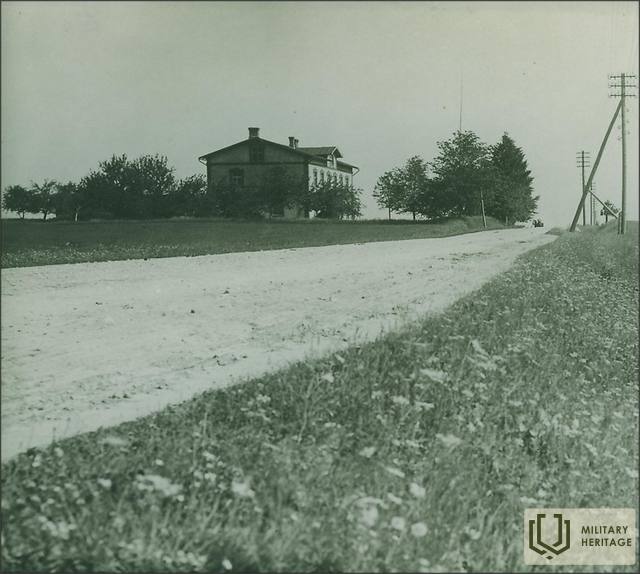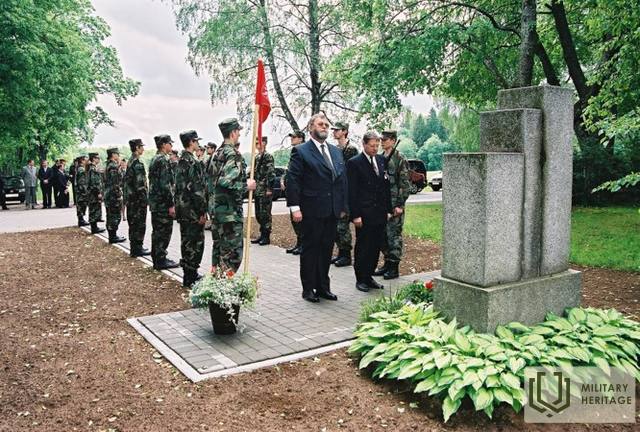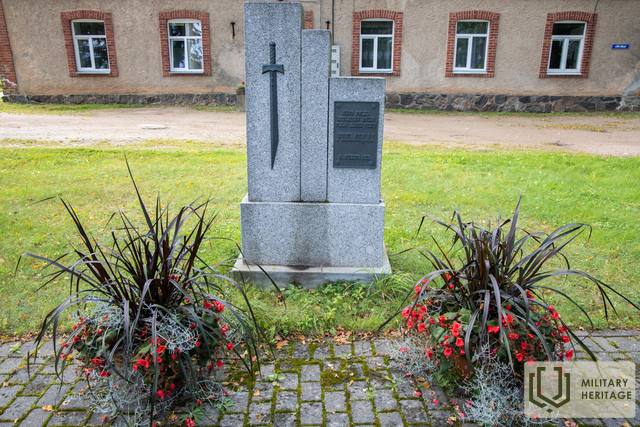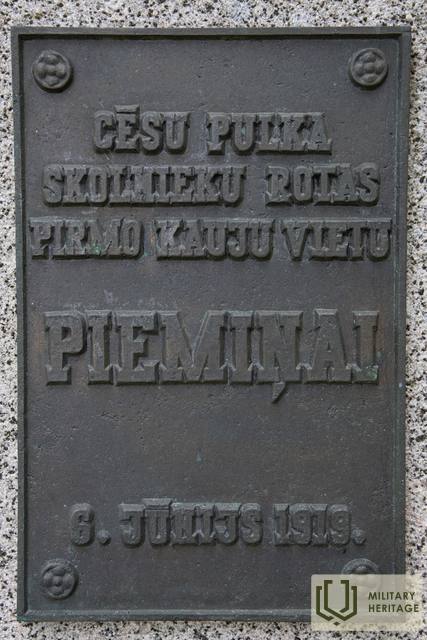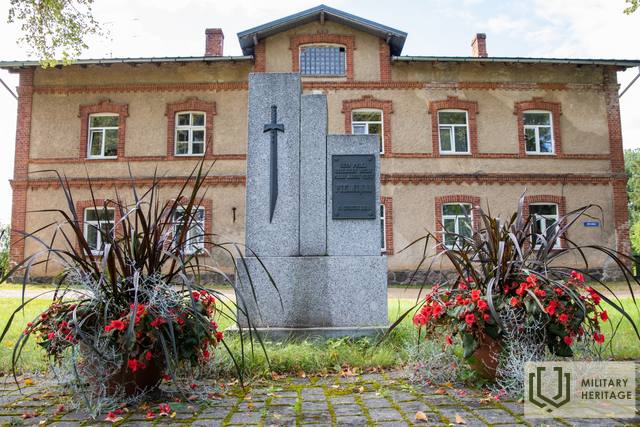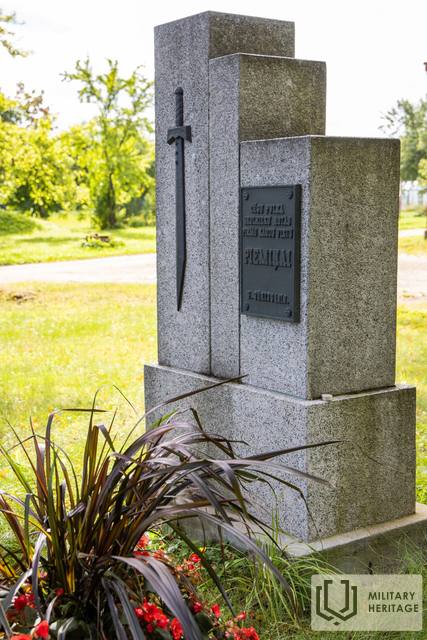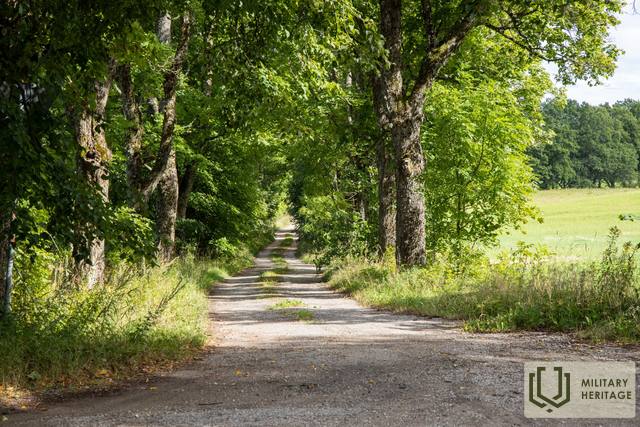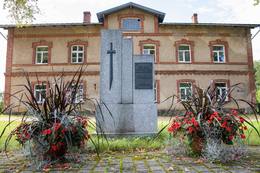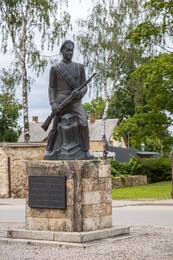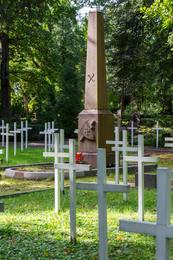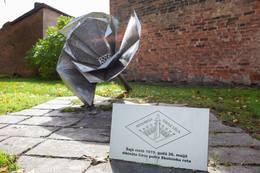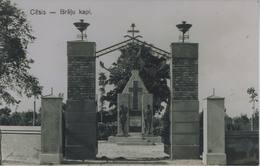Cēsise maleva õpilaste ornamentikale pühendatud monument endise Livu kogudusemaja juures

Cēsise maleva vabatahtlike selts osales 1919. aastal Cēsise lahingutes, mis moodustati 5. juunil Valmiera ja Cēsise koolide 108 noorest koosneva lahinguüksusena Cēsise progümnaasiumi ruumides. Juba ööl vastu 5. kuni 6. juunit, tund pärast südaööd, tekkis ärevus ja ornament kästi positsioonidele minna. Rota läks liinile Mācītājsmuiža - Meijermuiža, mida peeti kõige olulisemaks lahinguväljaks.
Esimeses lahingus sai mitu õpilast vigastada, kuid valgalane Edgars Krieviņš suri samal päeval väga tõsise kõhutrauma. 13. juunil maeti ta sõjaväelise auks Valmiera linnakalmistule. Pärast surma autasustati Edgars Krieviņšit Lāčplēsise sõjaordeniga.
1929. aastal asutasid endised koolisõdurid Cēsise lahingu 10. aastapäeva puhul "Cēsise rügemendi endiste vabatahtlike koolisõdurite ühenduse", mis järgnevatel aastatel hoolitses selle väeosa mälu säilitamise ja edendamise eest. koolinoorte seas.
Juba 1930. aastal püstitati Līvu kihelkonna lähedale Cēsis-Āraiši maantee äärde monument, mis tähistab kompanii esimest lahingukohta. Projekti autor oli ornamendi endine sõdur, arhitekt Kārlis Dzirkalis (1902 - 1997), kuid pronksist reljeefi autor oli skulptor Matīss Pluka (1893-?)
K.Dzirkalis. Livu kogudusemaja juures asuva mälestuskivi ideoloogiline seletus.
„Esiteks meenutavad kolm kõrvuti asuvat lubjakivi sõdurite auastet ehk seisvaid, reastatud sõdurite kujutisi. Sõdurid nõustusid ka suurimate otseste teenetega Läti vabastamisel.
Teiseks väljendavad need kivid meie riigi võidu nurgakive ja aluseid, millele meie võit toona tugines. Need on -1.- sõdurite elujõud ja oda teravus, 2.- pingeline kuulekuse ja entusiasmi vaim ning 3.- lai armastus isamaa vastu.
Kolmandaks viitab mälestuskivi meie riigi idee loomisele ja kujunemisele. Akmens 1.- väljendaks rahvusliku teadvuse sündi ja ärkamist, kui lätlaste mõtted ja tööd pidid olema teravad, et tõestada oma eluvõimeid (Kr. Valdemārs, Rainis jt). Stone 2. osutab omamoodi rahva kitsendamisele sõja ajal ja pagulastele, viletsusele ja muredele. Kolmas kivi esindab praegust noort põlvkonda, kelle õlgadel võideldi vabadusega relvadega. Viimane on seega stabiilne ja kindel. See tähistab ka suure ja viimase lahingu algust, mis toimus tahvli kujul. Nagu teate, toimus esimene signaal ja pauk Livu kogudusemajas, kus algas lahing kooliorkestri ja Manteife ratsutamisosakonna vahel. ” (LVVA 1967fonds, 1. aprill, juhtum 17, lk 8)
Allikas:
Mõõga läätse päike. Mälestuste ja dokumentide kogu Cēsise maleva õpilaste ehete kohta 1919. aastal. Sast. Tālis Pumpuriņš. - Cēsis, Cēsise muuseumide ühendus, 1994.
Monumendi lammutamisest ja restaureerimisest - J.Lismansi raamat "Lahingute ja langenud sõdurite mälestuseks 1915–1920"
Seotud ajajoon
Seotud objektid
Monument õpilaste kaunistustele lahinguväljal
Cēsis-Āraiši maantee servas, endise Liivu kihelkonna lähedal.
Vaadata saab 1919. aastal Cēsise lahingutes osalenud Cēsise rügemendi vabatahtlike ornamendile pühendatud monumenti.
Monument avati 29. mail 1930 endise Liivu kihelkonna lähedal.
Monumendi projekti töötas välja endine õpilasehete vabatahtlik K. Dzirkalis, paigaldustöid teostas firma A.Sproģis Cēsises.
Autori joonise järgi pronksdetailid lõi M.Pluka, need on valatud V.Minūta tehases Riias. Pärast II maailmasõda monument hävis.
6. juunil 1989 restaureeritud restaureeritud monumendi autorid on skulptorid A. Jansons ja M. Balttiņa, arhitekt I. Timermanis.
Hiljem eemaldati pronksmõõk ja plaat ohutuse huvides ning asendati puitdetailidega.
Võnnu polgu koolipoiste roodu mälestusmärk
Mälestusmärk Võnnu lahingus langenud Võnnu polgu koolipoiste roodu sõduritele asub Palasta ja Bērzainesi tänavate ristumiskohas Võnnus (Cēsises). Mälestusmärgi rajamise ettepaneku tegi Võnnu polgu koolipoiste roodu sõdurite ühing. See avati 26. mail 1938. Mälestusmärk on loodud kunagise roodu sõduri ja kunstniku Jānis Rozenbergsi ideekavandi järgi. Meetrikõrgusele allikalubjast postamendile on asetatud 1,8 meetri kõrgune koolipoisi vormi riietatud sõduri vaskskulptuur, mille on loonud skulptor Rūdolfs Āboltiņš ja vasksepp Jānis Zibens. Sõduri jalgade juurde on asetatud öökull, tarkuse ja teadmiste sümbol, kes kükitab sõdima läinud koolipoisi raamatute peal ja kaitseb neid. Skulptuur lammutati teise Nõukogude okupatsiooni ajal 1952. aastal. Selle asukoha lähedale püstitati 1957. aastal skulptor Kārlis Jansonsi kujundatud ausammas nimega „Komnoor-lipukandja”. Mälestusmärk taasavati 11. novembril 1992 oma ajaloolise asukoha lähedal. Samal aastal võeti maha okupatsioonirežiimi poolt püstitatud komnoore ausammas.
Esimeses maailmasõjas langenud läti laskurite ja Vabadussõjas langenud sõdurivendade kalmistu
Asub Valmiera linna (Kesk) kalmistul, Lilliase tänav 7.
Näha on graniidist obelisk, mille detailid on sepistanud skulptor Wilhelm Trey.
Monument avati 22. juunil 1923. aastal. Vendade kalmistule on maetud umbes 150 sõdurit.
Vendade kalmistule maeti mitu Esimese maailmasõja ja Vabadussõja võitlejat, sealhulgas Cēsise maleva koolikompanii LKOK Edgars Krieviņši esimesed hukkunud.
Praegu on vennaskalmistul 14 erineva pikkusega hauakomplekti, millele on püstitatud 139 valget puuristi, kuid ristidel pole enam tahvlit langenute nimedega. Üks mustast graniidist rist on säilinud.
Kommunistliku okupatsiooni ajal toimusid intensiivsed tsiviilmatmised vendade kalmistul. Pärast taasiseseisvumist 1994. aastal muudeti vennaskalmistu matuste plaani ning nüüdseks on rajatud risti-rästi kalmistuklastrid, millest vaid üks on säilitanud endise suunitluse.
Cēsise rügemendi üliõpilaskompanii asutamise mälestusmärk
Asub Leona Paeglese tn 1, punastest tellistest fassaadi kõrval.
Mälestusmärgi autor on kunstnik Solveiga Vasiljeva ning idee aluseks on õienupu motiiv. Kunstniku sõnul sümboliseerib see äsja kujunenud isiksusi – õpilasi, kes peavad oma vaikselt lühikeses elus langetama olulise, vastutusrikka ja karmi otsuse.
Mälestusmärgi kujul on õienupu välimised kroonlehed tehtud geomeetrilistest teravatest nurkadest, vastupidiselt punga õrnale ümarale siseküljele. Mälestusmärgi kõrgus on kuni 1,5 m. Mälestusmärk avati 26. mail 2011 Valmieras, kohas, kus 1919. aastal moodustati Cēsise rügemendi orkester.
Läti kontuurid on tehtud kunstlikest munakividest, millele on asetatud plaat Cēsise rügemendi Üliõpilaste Seltsi lipu ja tekstiga:
„Selles kohas 26. mail 1919. a
Asutati Cēsise rügemendi õpilasfirma "
Cesise vendade kalmistu
Asub Cēsise Lejase kalmistul, Lenču tänav 15, Cēsis.
Üks olulisemaid Esimese maailmasõja ja Vabadussõja mälestuspaiku Cēsises on Alumisel kalmistul asuv vendade kalmistu.
Kalmistu on 1927. aastal Cēsise kunstniku ja mõtleja Augustus Julla (1872-1958) ehitatud Vennaskalmistu monument, mis on pühendatud aastatel 1915-1920 Vennaskalmistule maetud sõduritele.
Cēsise Alumise kalmistu vendade kalmistule on maetud umbes 200 sõdurit. Nende hulgas teadmata arv Esimeses maailmasõjas langenud läti laskureid ja vene sõdureid, samuti saksa (10), poola jt rahvusest sõdureid. Selle Läti kalmistu ajal maeti nendele kalmistutele 5. (2.) Cēsise jalaväerügemendi 22 langenud sõdurit, samuti 11 vabadusvõitlejat, kes langesid teistes Läti armee üksustes. Vennaskalmistule on maetud 2 eestlast, 15 enamlaste ohvrit ja ka läti punapüssimeest.




